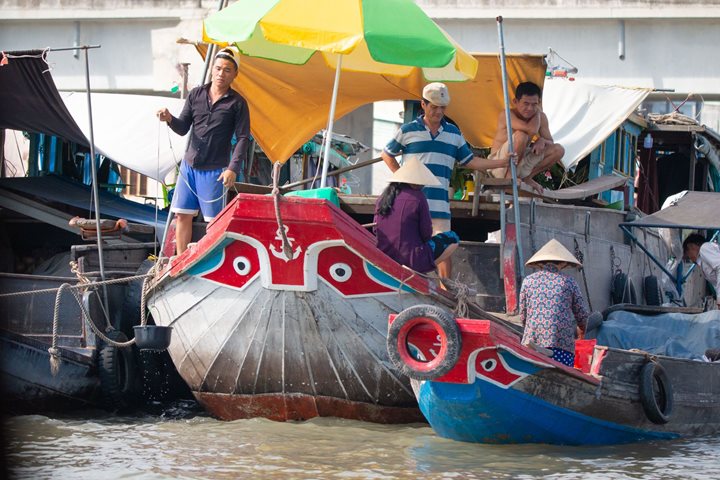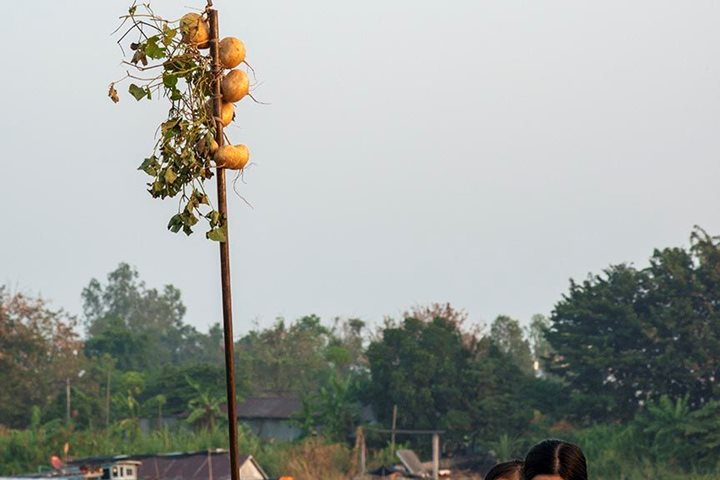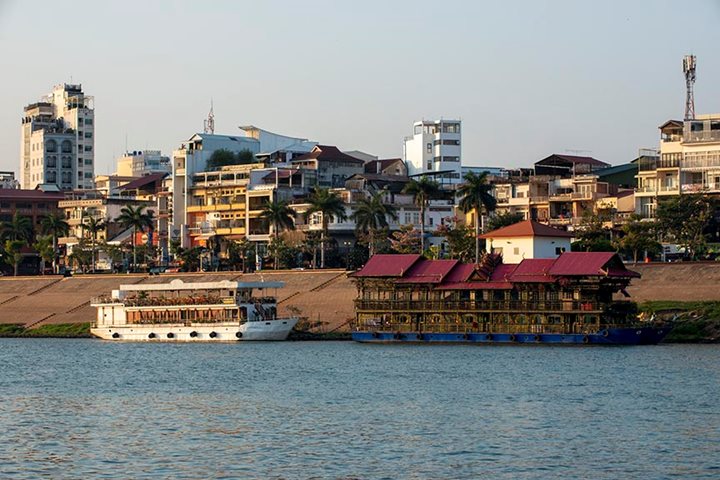A little dizzy from a couple of days of Saigon’s cosmopolitan craze, we were all delighted to get aboard the river yacht Jahan and cast off into Vietnam’s Mekong Delta. After all of the excitement and busy opportunism of the country’s burgeoning economic capital, the Jahan was a comforting embrace as we cruised upstream against a parade of barges laden with dredged sand and silt for export. We had been able to explore the spacious decks and public areas, settle into our beautifully appointed cabins, test out our individual balconies, and enjoy our first dinner on board before settling into a quiet evening at anchor near the delta city of Cai Be.
Now it was time to get out in the sampans and start to explore. The local sampans were roomy and shaded, giving us views all about on both our morning and afternoon outings. We needed those peripheral views to take in and photograph all of the action going on in every direction, on the riverbanks and in the river itself. Our morning destination of Cai Be is a bustling market center, and we cruised through the floating wholesale markets advertising their produce at the end of a mast pole on their bows. Melons, radish, banana, sweet potato, and lots of root vegetables that were unfamiliar to us competed for attention as we cruised by. We veered past a concrete Gothic cathedral—testament to 150 years of French Indochine colonialism—and landed at an outlying village to visit a family that processed rice and coconut. It was fascinating to see the basic but ingenious processes of making rice paper, rice candies, rice wine, and coconut candies, with nothing discarded and everything put to use.
We also cruised through the surrounding canals to see factories where rice was collected, and the husks were removed to be sold and shipped off in bulk. We passed many brick-making kilns that used the husks for fuel to fire the kilns. We saw enormous logs piled on the shores of small scale boat-building operations that built the boats that hauled the rice and the husks and the fish and the soybeans and many, many, many other things in the busy delta waterways.
Our afternoon outing was already a big change from Cai Be, as Binh Tanh Island was much more pastoral, with the canals fringed with water hyacinth that is harvested for use in “steamboat” soup-pots, animal feed, and the making of furniture and handbags. Mango and papaya trees were heavy with fruit, along with the a few jackfruit trees with fruit the size of watermelons. And in the river there were dozens and dozens of floating shacks that turned out to be active fish farms. Here they were raising red tilapia, timed to harvest at the attractive price of a dollar a kilo for the upcoming Tet holiday season. We landed on the island at a village that specialized in making reed floor mats that are found throughout Vietnam, and had an enjoyable chat with two of the village elders who tended the ancestral temple, and told us about their long lives in the village.
It was a day of almost dizzying interest and wonder, with plenty to sort through and reflect upon as we cruised up river in the last hour of daylight to a molten red Mekong sunset.









